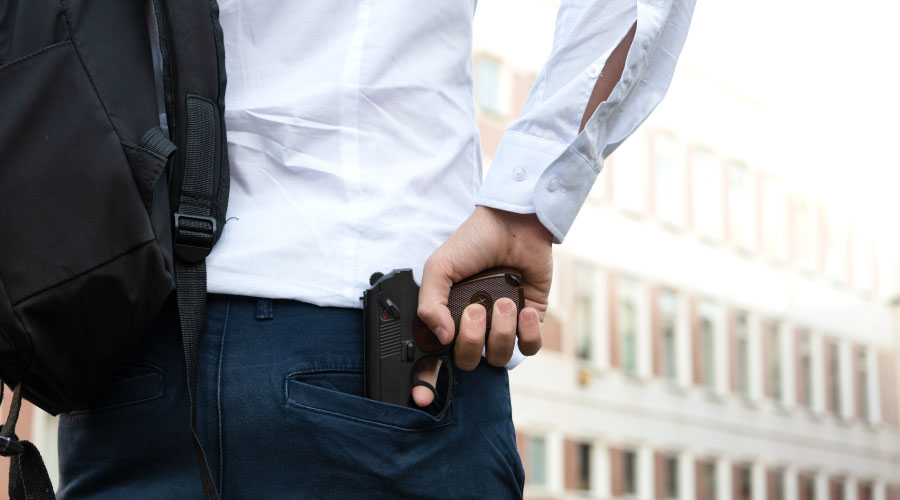Crash Course in Security
Johns Hopkins University beefs up surveillance, and its plant operations department gets a quick education in installing a security-system infrastructure
Ensuring the safety of students, faculty, staff and visitors is a growing priority for colleges and universities. So when two murders near Johns Hopkins University’s Homewood campus in Baltimore raised serious security concerns, the university accelerated its plans to implement surveillance technology for the campus’s 2.5 million square feet of facilities. Homewood is the main campus for the university’s schools of engineering and arts and sciences.
The university’s security consultant, iXP, recommended installing 32 cameras in and around dormitories as the project’s first phase. The university’s plant operations department was responsible for providing power circuits and communication and control wires to each camera, but managers and technicians had less than six weeks to complete the job.
“It all happened at a very fast pace,” says David Ashwood, the university’s director of plant operations. “Everyone knew what the charge was — to get these security cameras in place within a very short period of time. The job seemed insurmountable at the time.”
Another element of the installation project posed challenges for the department.
“It was a very highly profiled and very critical project for the university,” says Michael Cleveland, the university’s cable plant project manager, who oversaw installation of the system infrastructure. Besides pulling cable and optical fiber, the project required Cleveland and his team of technicians to run pipes and build pathways to the camera locations, as well as construct concrete pedestals, drill holes in the buildings, and provide 110-volt power.
“Given the tight deadlines we were under, I was surprised we ran into as few glitches as we did in the installation,” Cleveland says.
Teamwork in a Crunch
For a project of this magnitude, Cleveland normally would need about a month to review design plans and solicit bids from contractors. In this case, however, he only had a few days for this task.
“We were under a fair amount of pressure to get the cameras up and running,” he says. “Because of that pressure, we had to rely on contractors with whom we had a high level of trust.”
Hiring contractors who could install the infrastructure quickly while maintaining the physical plant’s quality standards was critical. Cleveland selected contractors with the longest work history at Homewood because of their knowledge of campus buildings. Although Cleveland inspects each job the contractors complete for quality assurance, he wanted contractors he could trust.
“When you’re dealing with drop ceilings, you have no clue what is going up in that ceiling,” he says. “You don’t know how they pulled the wires, what problems they’re running against, how they did their penetrations, or if they did firestopping and all of the other tasks the job requires.” The project’s success also depended on the skills and cooperation among contractors and other university departments.
“It was a lot of people getting involved in a big hurry,” Cleveland says. Besides consulting with his department’s electricians, Cleveland and the contractors met with iXP representatives and the university’s director of architecture and planning almost daily to discuss camera locations and appearance. Teamwork was particularly critical when complications arose.
“Sometimes, we couldn’t make a straight line to the building because there was something in the way,” he says. For example, trees sometimes blocked a camera’s view.
“We talked with our grounds crew to see if they could cut down the limbs,” he says, adding that in some cases, they could not for aesthetic reasons. “In solving these problems, we would always ask ourselves, ‘What area are we trying to cover with the camera?’ ‘Can we relocate the camera to deal with the trees?’ and ‘Do we lose anything from a security perspective by relocating them?’”
Talk and More Talk
Communication with contractors was critical to meeting deadlines. Each morning, they met and referred to maps containing information on the type of camera, cable and power the each location required. They also discussed the work they accomplished, work they still needed to do, and problems that arose.
“Those meetings, more than anything, kept us on track,” he says. “We had to know everyday where were we running into issues and find solutions to deal with those issues.” One common challenge was determining exactly where holes for exterior-mounted cameras would appear on the interior.
“When we pinpointed the location on the outside of the building, we did our best to determine what room number was on the other side,” Cleveland says. “We didn’t always get it right because some of the buildings have been renovated, and the floors on the insides don’t necessarily make sense with the windows.”
Beyond Installation
Following the cameras’ installation, Cleveland’s department became responsible for cabling and connectivity issues. Through its contractors, the security consultant maintains the electronic units. The cameras exist on a private data network with optical fiber dedicated exclusively to the security system. The system’s data is not available to the public.
“Because the entire network is on its own private fiber, the system requires an incredibly low amount of maintenance,” he says. “We don’t have to worry about the public data switches, broadcast storms or other issues you might have with electronics. Painting the camera houses is about the only maintenance the plant operations department will be responsible for.”
The first wave of installations focused on the perimeter of the campus, city streets adjacent to the area and points of public access to the campus. It included installation mountings on 12 of the campus’s nearly 80 buildings. Now, Cleveland is preparing system expansion.
“We have at least two other waves of camera installations that are in the planning stages,” he says. Because of the system’s software requirements, each phase of installations consists of 32 cameras.
In subsequent installations, all parties involved in the project will have more time to determine the best camera locations. Cleveland reviewed iXP’s recommendations for future locations and anticipates challenges.
“They’ve marked some areas where I’ve got nothing for connectivity,” he says. “I don’t have copper, fiber or pipe in the ground. We’ll have to build it. We have to look for where we have maintenance holes, duct banks and utility tunnels, and start building the pathways we need. Usually, it’s not an issue, but now we’re moving to more distant parts of our campus.”
Cleveland expects challenges in installing cameras in older academic buildings.
“We’re implementing another layer of infrastructure to buildings that weren’t designed to have air conditioning, let alone video cameras,” he says. Unlike dormitories, these academic buildings include brick and granite, and they feature 15-foot-wide hallways, high ceilings and archways.
“It is very difficult to run a cable in that environment because of those features,” he says, adding that it also will be more difficult to hide the cables. Cleveland also is concerned about the lack of air-conditioning in some areas because keeping the electronics cool is critical to efficient operation.
“One of the prime areas we’re looking at is around our athletic field,” he says. “Unfortunately, where we want to put it — on the visitors side of the field — is a large concrete grandstand that doesn’t have an air-conditioned room.” Installing air conditioning units in these areas requires more space than is available.
“Acquiring space is always a very difficult thing to do at an academic campus because all of the space is being used,” Cleveland says. “In the dormitories, we carved up space, built walls and actually manufactured rooms to house the security cabinets where they would be physically secure. Now, we’re going into academic buildings where space is even tighter.”
Whatever challenges lie ahead, Cleveland says the best way to solve them will be to apply the lessons learned from the first phase of the project, and to treat each location independently.
“It’s one day at a time, one location at a time,” he says. “If I tried to take that as a single project all at once, that would be fairly overwhelming. The only way we were able to get through this project successfully was by meeting every day and working with contractors we trusted.”
Security Systems, Dormitory Dilemmas
When Johns Hopkins University implemented its surveillance camera system earlier this year, the primary focus was to secure the campus’s dormitory areas. Working in these areas posed unique challenges for the workers installing the system’s infrastructure.
“Working in student housing spaces is always a big challenge for us,” says Michael Cleveland, cable plant project manager.
To install the system, contractors starting work each day checked into the central housing office to pick up badges. Cleveland also arranged for escorts to accompany the workers. This tactic became a particular challenge because workers climbed on ladders and between floors, constantly entering and exiting buildings. Workers also needed to be aware of the noise they make.
“We can’t go in at 7 a.m. and start hammer drilling the floors, he says. “Students get very upset about that.” The technicians also needed to be careful working in dorm rooms.
“We were standing in a person’s room drilling through the wall to the outside,” Cleveland says. “So we were literally climbing on desks and moving piles of laundry.”
Managers overseeing such projects must pay special attention to the proper conduct of contractors and in-house technicians.
“Our contractors will move the furniture around if they have too, but they’ll also move it back,” he says. “Some contractors will leave piles of drywall and brick dust all over the place. Our workers were very careful not to do that. They used dropcloths to protect the students’ belongings.”
As a result of these preparations, students tended to be more cooperative with workers. It also helps if students understand how the work will benefit them.
Says Cleveland, “We didn’t receive any complaints when we were installing the security system because it was something that the students very much wanted.”
— Renee L. Gryzkewicz
|
Related Topics:











